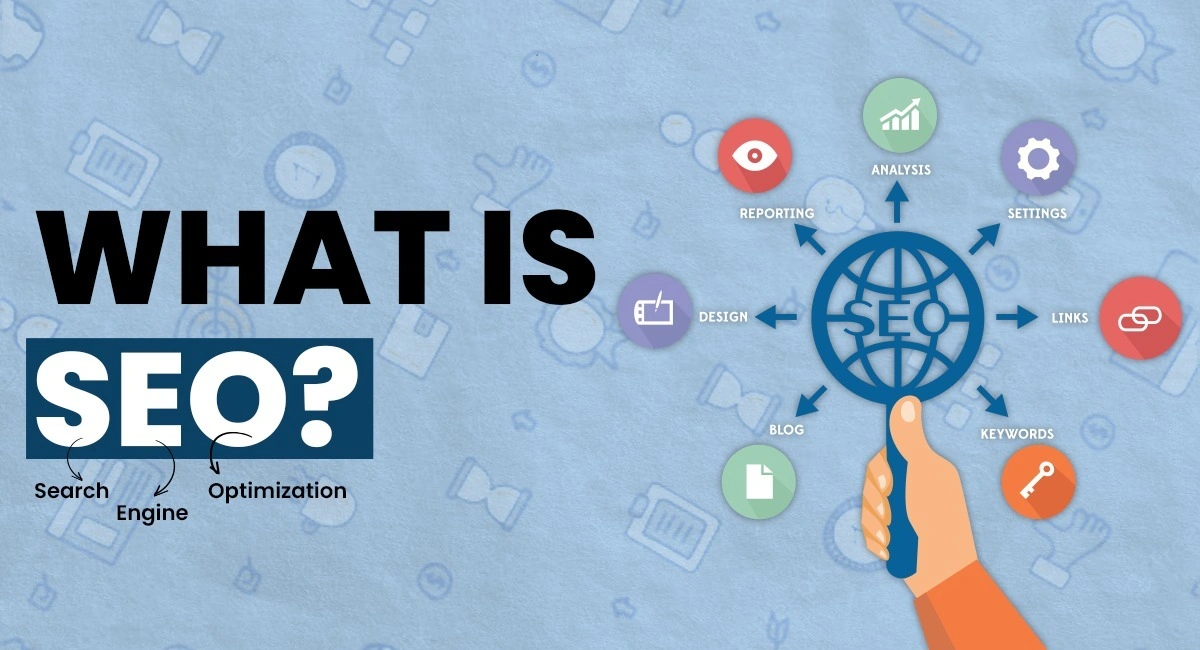
Search Engine Optimization , is the process of optimizing a website or online content to improve its visibility and ranking in search engine results pages (SERPs). The ultimate goal of SEO is to increase organic (non-paid) traffic to a website by enhancing its relevance and authority in the eyes of search engines like Google, Bing, and Yahoo.
In the digital landscape dominated by search engines, having a strong online presence is paramount for businesses and individuals alike. Search Engine Optimization (SEO) emerges as the cornerstone strategy for enhancing visibility and driving organic traffic to websites. SEO encompasses a multifaceted approach aimed at optimizing various elements of a website to rank higher in search engine results pages (SERPs), thereby increasing its visibility to potential audiences. In this comprehensive guide, we delve into the intricacies of SEO, exploring its fundamental principles, key strategies, and best practices.
Understanding the Fundamentals of SEO
At its core, SEO revolves around understanding and catering to the algorithms and ranking factors employed by search engines such as Google, Bing, and Yahoo. These algorithms assess and rank websites based on various criteria, including relevance, authority, and user experience. By aligning with these criteria, websites can improve their chances of appearing higher in search results, consequently attracting more organic traffic.
The Importance of Keywords
Keywords serve as the foundation of SEO, acting as the bridge between user queries and website content. Through meticulous keyword research, website owners identify the terms and phrases commonly used by their target audience when searching for relevant information or products. By strategically incorporating these keywords into their website content, including titles, headings, meta descriptions, and body text, they increase the likelihood of their pages being indexed and displayed in search results for relevant queries.
On-Page Optimization: Crafting Search Engine-Friendly Content
On-page optimization focuses on optimizing individual web pages to enhance their relevance and visibility in search engine results. This involves fine-tuning various on-page elements, such as meta tags (title tags, meta descriptions), headings (H1, H2, H3), URL structures, and internal linking. Additionally, optimizing the quality and relevance of content plays a pivotal role in improving on-page SEO. By creating high-quality, informative, and engaging content that aligns with user intent, website owners can establish themselves as authoritative sources in their respective niches, thereby improving their search rankings.
Off-Page Optimization: Building Authority and Credibility
While on-page optimization addresses factors within the website’s control, off-page optimization focuses on external factors that influence search engine rankings. Central to off-page SEO is the concept of link building, whereby websites acquire backlinks from other reputable and relevant sources. Backlinks serve as a vote of confidence from external websites, signaling to search engines the credibility and authority of the linked website. However, the quality and relevance of backlinks are crucial, as low-quality or spammy backlinks can have a detrimental impact on a website’s rankings.
Technical SEO: Optimizing Behind-the-Scenes Elements
Technical SEO involves optimizing the technical aspects of a website to enhance its crawlability, indexability, and overall performance in search engine rankings. This includes optimizing site speed, mobile-friendliness, site architecture, URL structures, and implementing schema markup to provide search engines with structured data about the website’s content. Additionally, ensuring proper website security (HTTPS), fixing crawl errors, and optimizing XML sitemaps are essential components of technical SEO that contribute to improved search visibility.
Content Creation and User Experience
Content creation lies at the heart of SEO, as high-quality, relevant, and engaging content serves as the primary driver of organic traffic. By crafting content that addresses the needs, interests, and pain points of their target audience, website owners can attract and retain visitors, thereby signaling to search engines the value and relevance of their website. Moreover, prioritizing user experience (UX) elements, such as intuitive navigation, fast load times, mobile responsiveness, and clear calls-to-action, enhances user satisfaction and indirectly influences search engine rankings.
Local SEO: Targeting Geographic Audiences
For businesses operating in specific geographic locations, local SEO offers a tailored approach to reaching local audiences and driving foot traffic to physical locations. Local SEO tactics include optimizing Google My Business listings, acquiring local citations, garnering positive reviews and ratings, and geotargeting relevant keywords. By optimizing for local search intent and providing accurate and consistent business information across online directories, businesses can improve their visibility in local search results, thereby attracting nearby customers.
Measuring Success: Metrics and Analytics
Effective SEO strategies are underpinned by continuous monitoring, analysis, and refinement based on actionable insights gleaned from relevant metrics and analytics. Key performance indicators (KPIs) such as organic traffic, keyword rankings, conversion rates, bounce rates, and backlink profiles provide valuable insights into the effectiveness of SEO efforts. By leveraging tools such as Google Analytics, Google Search Console, and third-party SEO software, website owners can track progress, identify areas for improvement, and adapt their strategies to achieve optimal results.

Share your thoughts